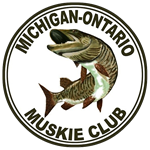Heart Attack: First Aid
We are in the beginning stages of organizing a certified CPR and First Aid class that is American Heart Assoc. approved this Spring. We will keep you abreast of the time and date. This will count for USCG captain requirements and healthcare worker requirements.
Someone having a heart attack may experience any or all of the following:
- Uncomfortable pressure, fullness or squeezing pain in the center of the chest
- Discomfort or pain spreading beyond the chest to the shoulders, neck, jaw, teeth, or one or both arms, or occasionally upper abdomen
- Shortness of breath
- Lightheadedness, dizziness, fainting
- Sweating
- Nausea
- A heart attack generally causes chest pain for more than 15 minutes, but it can also haveno symptoms at all. Many people who experience a heart attack have warning signs hours, days or weeks in advance.
What to do if you or someone else may be having a heart attack
- Call 911 or your local medical emergency number. Don’t ignore or attempt to tough out the symptoms of a heart attack for more than five minutes. If you don’t have access to emergency medical services, have a neighbor or a friend drive you to the nearest hospital. Drive yourself only as a last resort, and realize that it places you and others at risk when you drive under these circumstances.
- Chew and swallow an aspirin, unless you are allergic to aspirin or have been told by your doctor never to take aspirin. But seek emergency help first, such as calling 911.
- Take nitroglycerin, if prescribed. If you think you’re having a heart attack and your doctor has previously prescribed nitroglycerin for you, take it as directed. Do not take anyone else’s nitroglycerin, because that could put you in more danger.
- Begin CPR if the person is unconscious. If you’re with a person who might be having a heart attack and he or she is unconscious, tell the 911 dispatcher or another emergency medical specialist. You may be advised to begin cardiopulmonary resuscitation (CPR). If you haven’t received CPR training, doctors recommend skipping mouth to mouth rescue breathing and performing only chest compressions (about 100 per minute). The dispatcher can instruct you in the proper procedures until help arrives.
- If an automated external defibrillator (AED) is available and the person is unconscious, begin CPR while the device is retrieved and set up. Attach the device and follow instructions that will be provided by the AED after it has evaluated the person’s condition.
